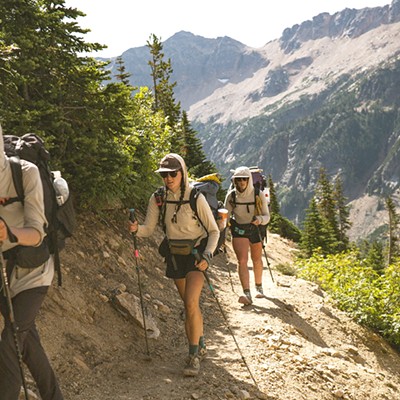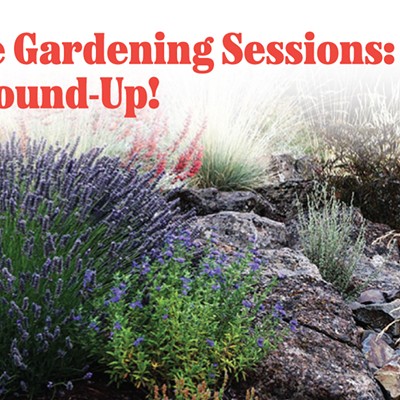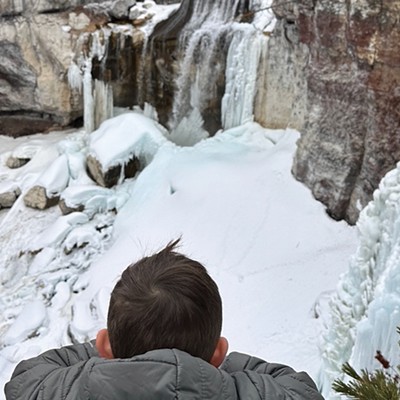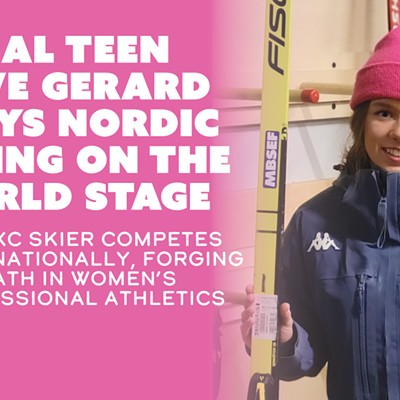Editor's Note: Over the next few weeks the Source is running a five-part series on a few of the icons of Bend's outdoor scene.
In the early '50s when Terry Foley was an 11-year-old kid, he and a couple of friends from town would often catch a ride with someone's mom or dad up Skyliners Road.
Using stocked firewood, they'd build a small fire inside a three-sided shack, use their shovels to build a jump, and hike laps all day. Come lunchtime the kids would break the ice over Tumalo Creek to get water and then eat soup in their de facto clubhouse.
This was skiing in Bend in the early '50s.
"We had primitive stuff, skis with no edges and stuff, and we'd just pack around," Foley said. "There were no houses, no telephones, nobody said, 'Jeez, what if you hurt yourself?' "
Foley's experience pioneering Central Oregon's earliest ski areas would later lead to his role in establishing a formal ski education program here, but not until after he'd had a heck of a lot of fun just sliding on snow.
Those frontier-style day trips up Skyliners, for instance, took place at the site of an old ski area established by Scandinavian immigrants in the '30s. Originally the area had little more than a rope tow and a 90-meter long jump. Surprisingly, the ski area also hosted night skiing, made possible by incandescent bulbs fixed to pine trees.
"After WWII, probably in the early '50s, I guess, people got interested in rehabbing this facility, so as little kids we'd go out there and cut manzanita trees and stuff," Foley said. "They had these work crews, and so we rehabbed the hill."
The old-timer said that this was an era when the whole of Bend benefited from regular community involvement. It happened as a matter of course, like how the fire department flooded Troy Field so that there'd be a place to iceskate.
"There was just a lot of volunteer stuff. There were three lumber mills here then, and [they] would collaborate and they'd build these rope tows with a straight-8 Buick engine and 1,200 feet of rope—I mean, it was a significant deal," he said.
After a few years of inconsistent conditions at the Skyliner ski area, Gene Gillis—member of the 1948 U.S. Olympic Alpine Team—got a local ski team going. He became a coach and mentor for Foley.
"We would do race camps up on Bachelor before there was any ski area," Foley said. "In the fall we would drive up as far as you could get on the road and then start walking."
They set up a portable rope tow, and installed it by winching it to trees so it could pull itself uphill. The rest of the gear was hauled to the now well-established ski area on a road, which at the time was unsuitable for vehicles.
"Us kids would be hauling 50-pound bags of salt, because we had to salt the roads," Foley said.
Foley tells how Christian Pravda—an Olympic giant slalom silver medalist and downhill bronze medalist in 1952—would haul the 200-pound towrope up the snow-covered road for the race camp.
Needless to say, when the Mt. Bachelor ski resort opened in 1958, there were more than a few happy kids on the ski team.
Benefiting from the guidance of Olympic-caliber ski coaches, Foley made it to the Junior National Championship in 1959 and 1960 before the Army sent him oversees to serve in Germany for three years.
"My skiing career in competing sort of ended. But when I got out I got into coaching right away," Foley said.
In 1977, Foley became head coach of the Skyliner Ski Club, and rode out the last three years of the club before it was officially taken over by Mt. Bachelor.
In those early years he attended ski swaps and helped buy gear for kids who otherwise couldn't afford such luxuries. As a result, skiing was made accessible to children from a spectrum of backgrounds.
"It was doctors kids and lawyers kids and that kind of stuff, but regular people could do it, too," Foley said.
The results of Bend's early ski history, as told by Foley, helped spark such organizations as the Mount Bachelor Sports Education Foundation and contributed to the robust snow sports culture and industry Central Oregon enjoys today.
"I think skiing is the best activity that exists. I mean, from cradle to grave, you can ski," Foley said.




















